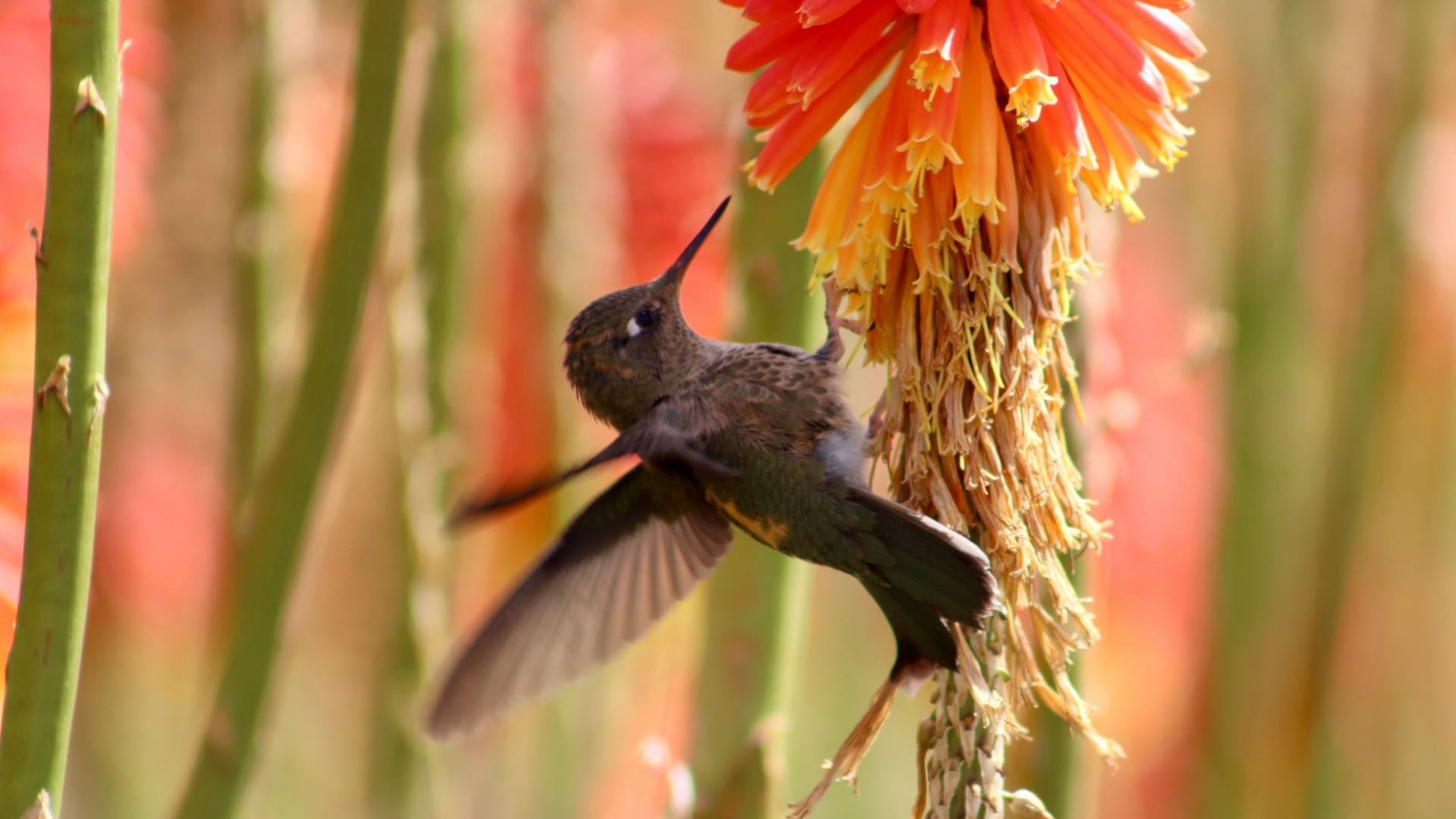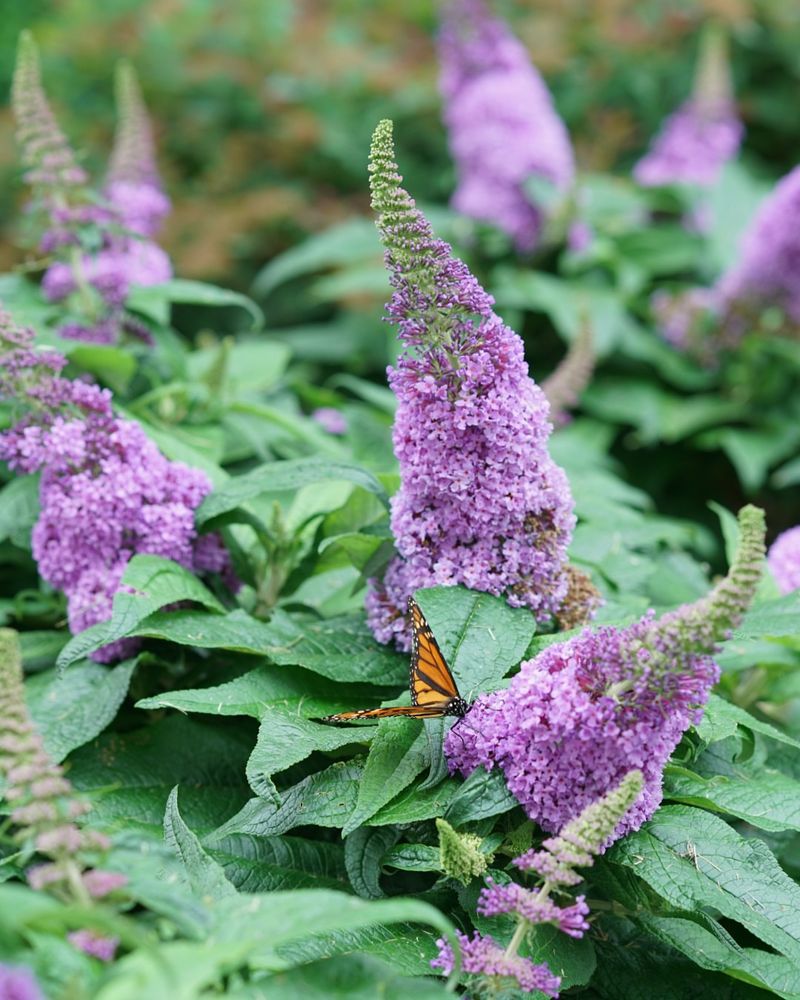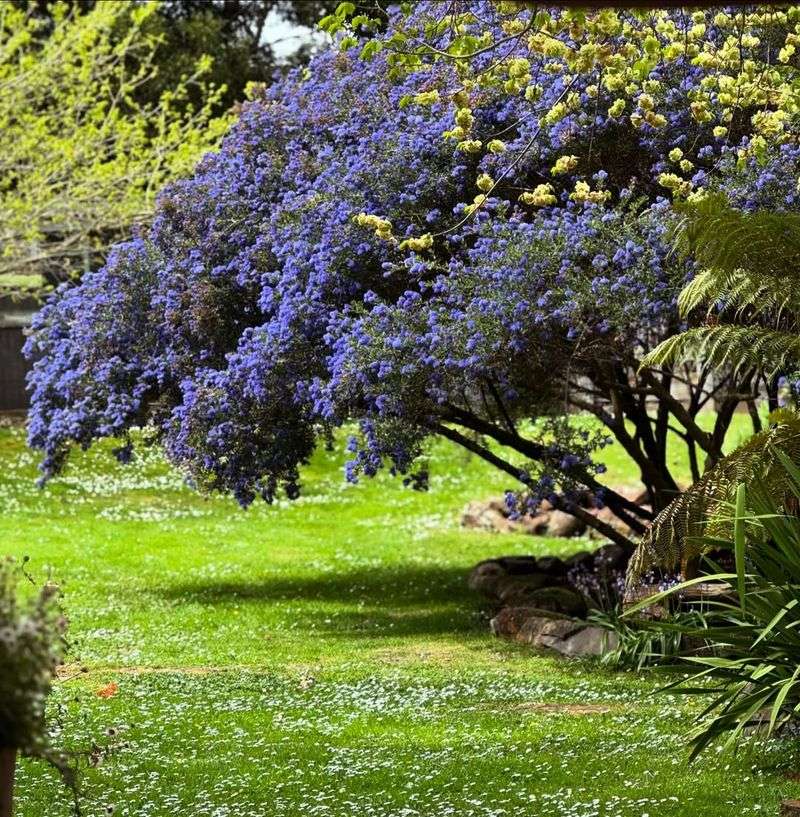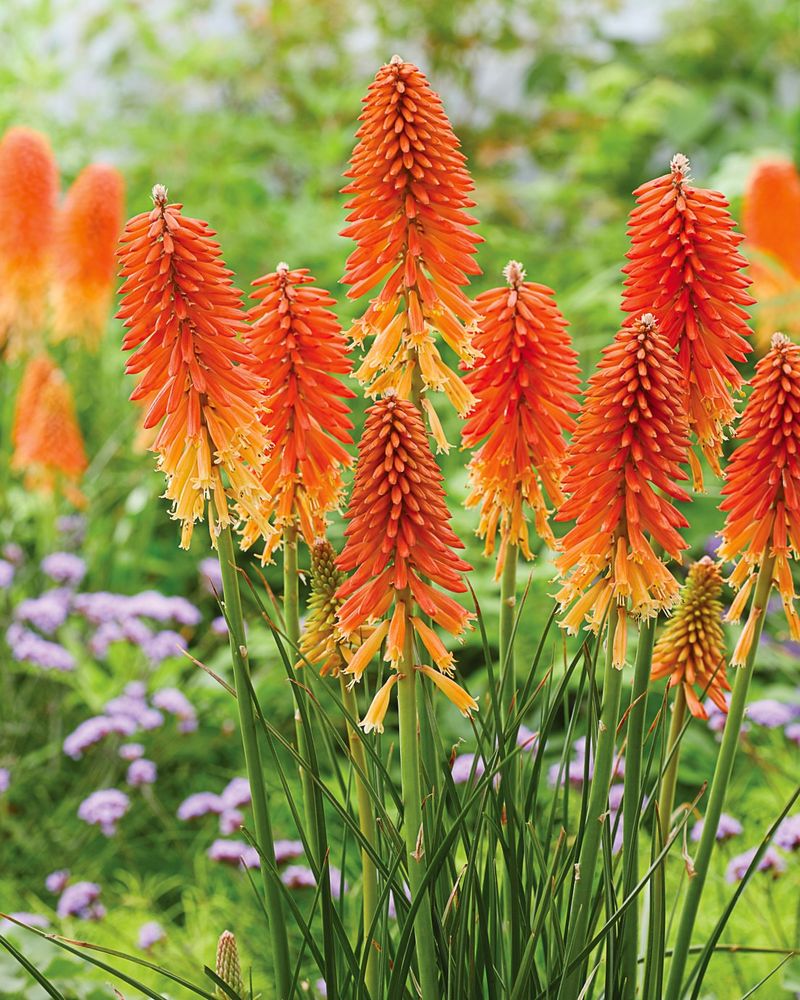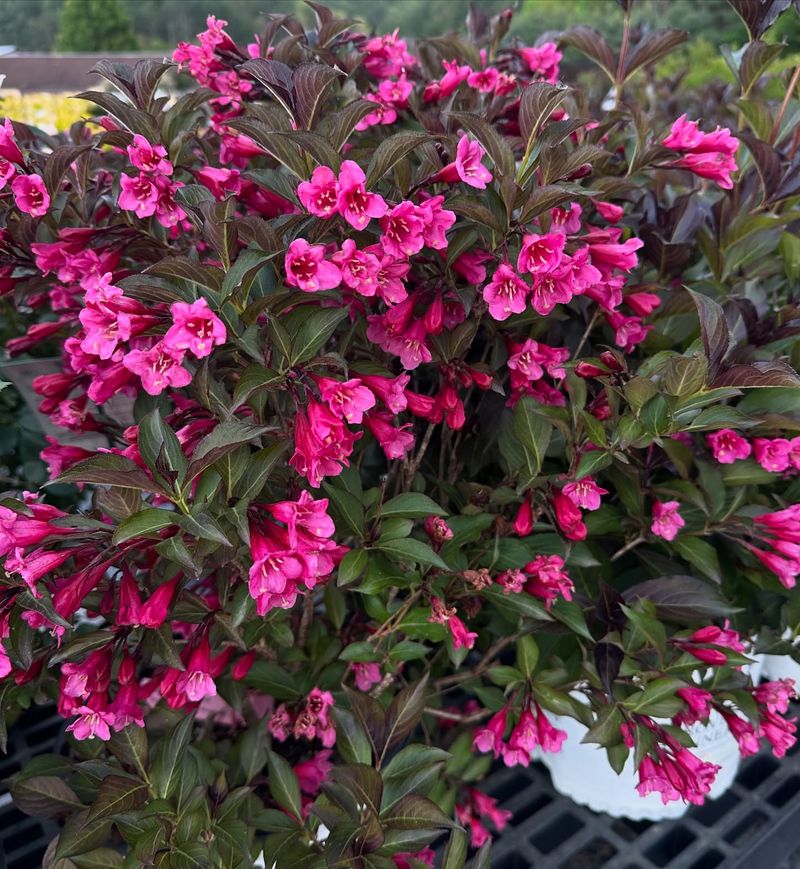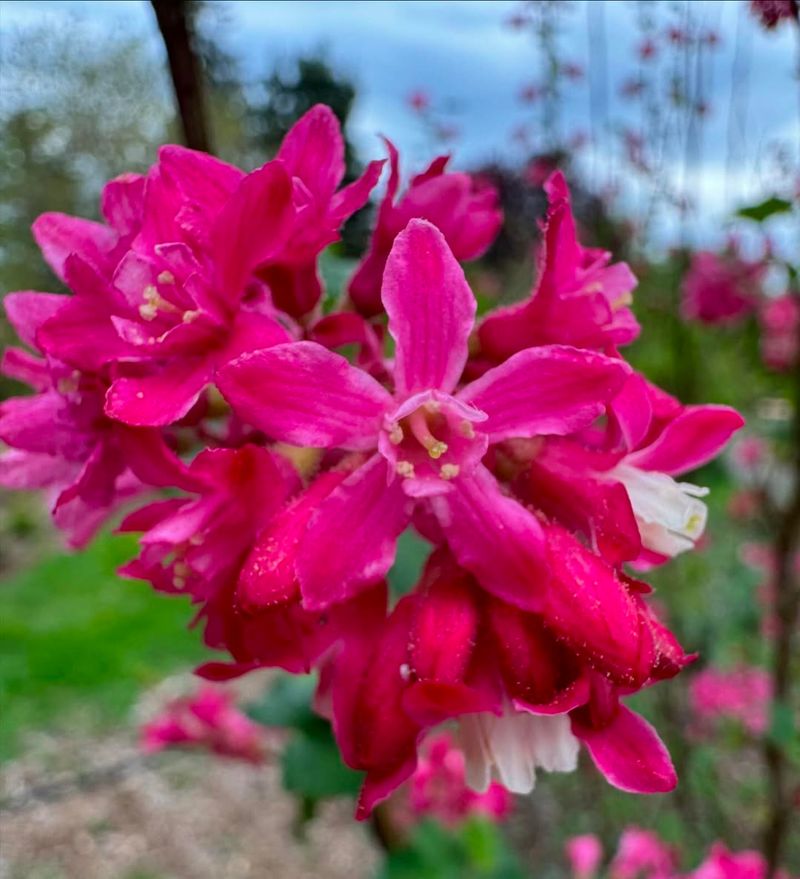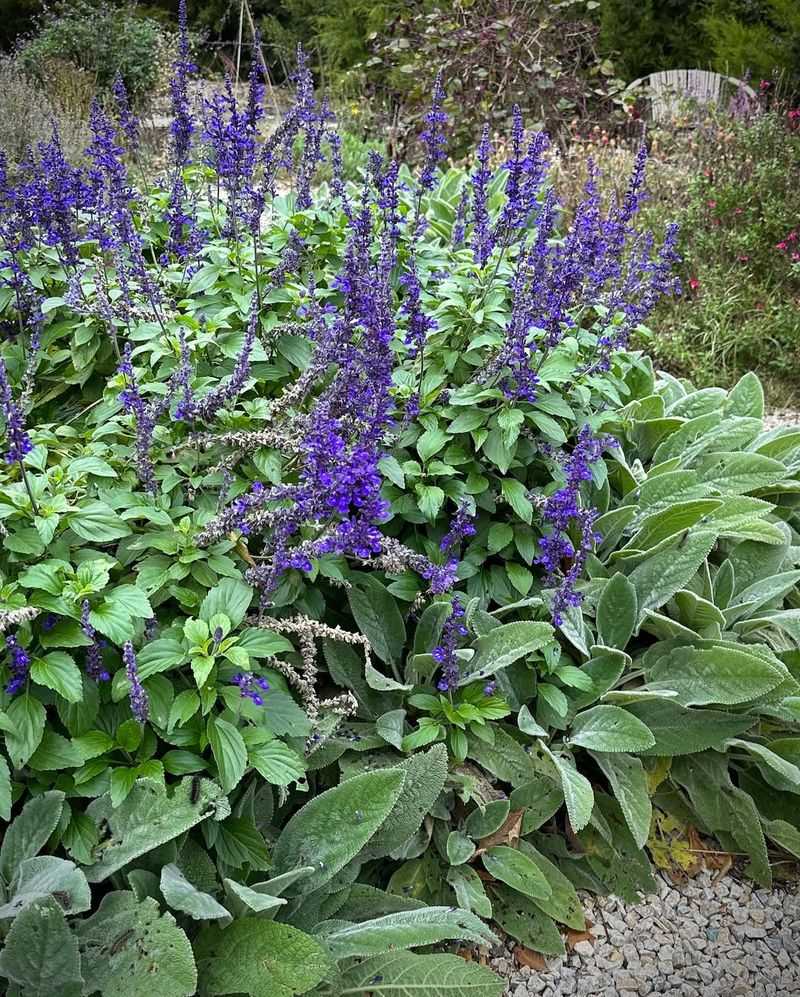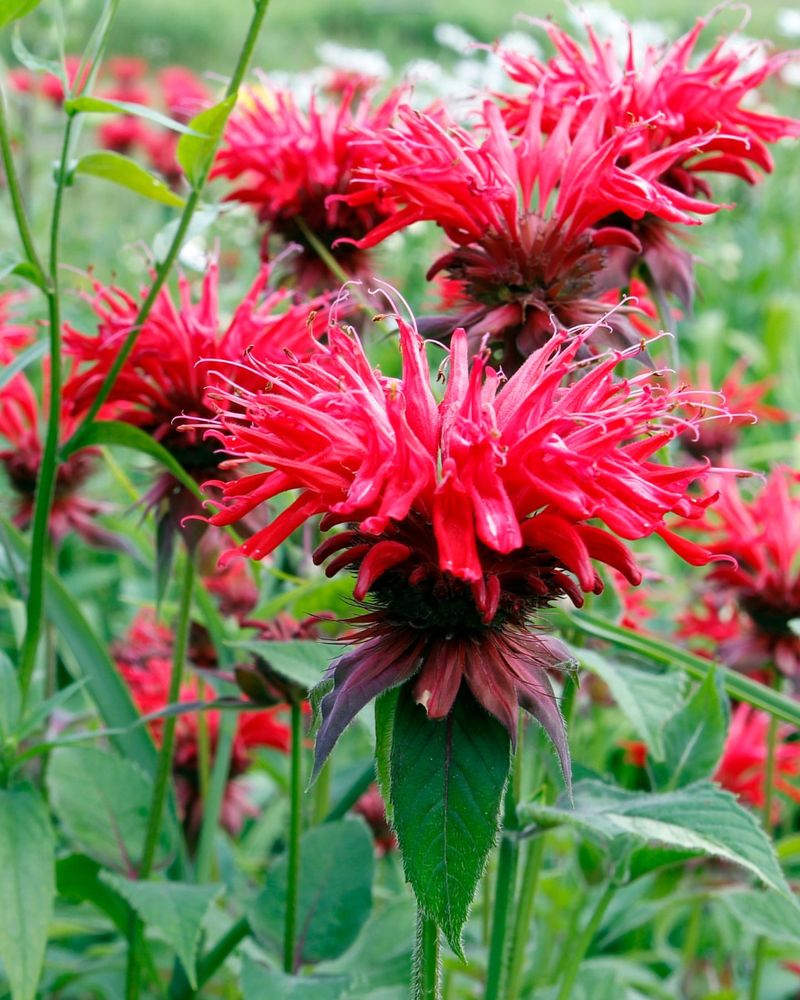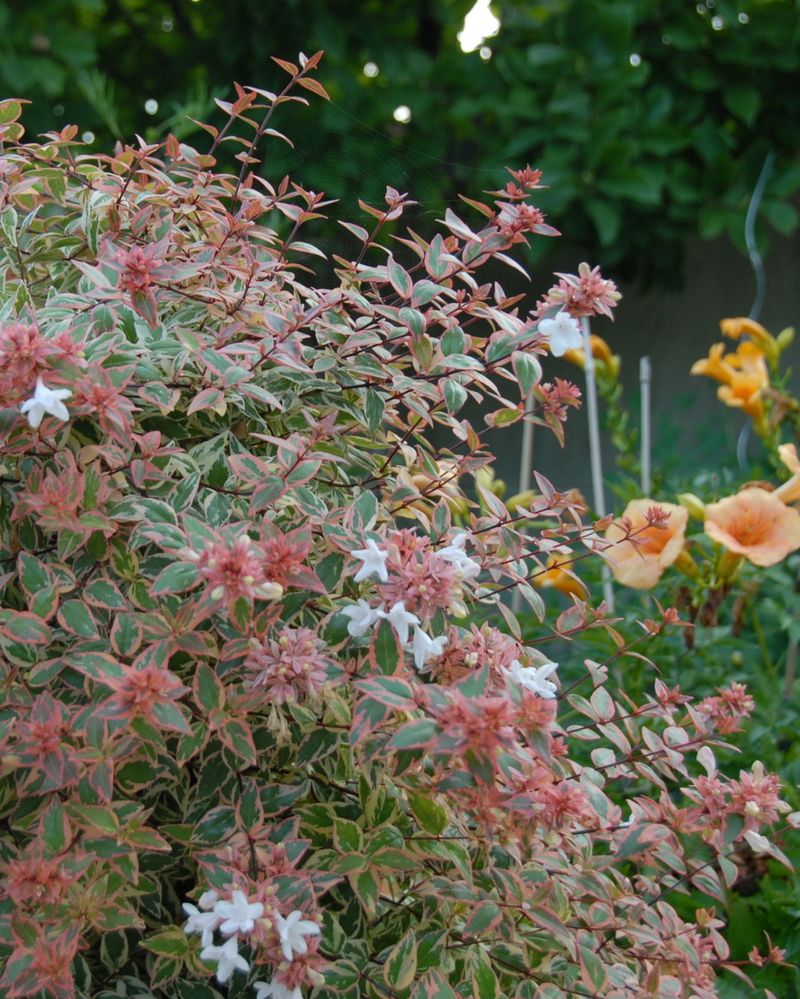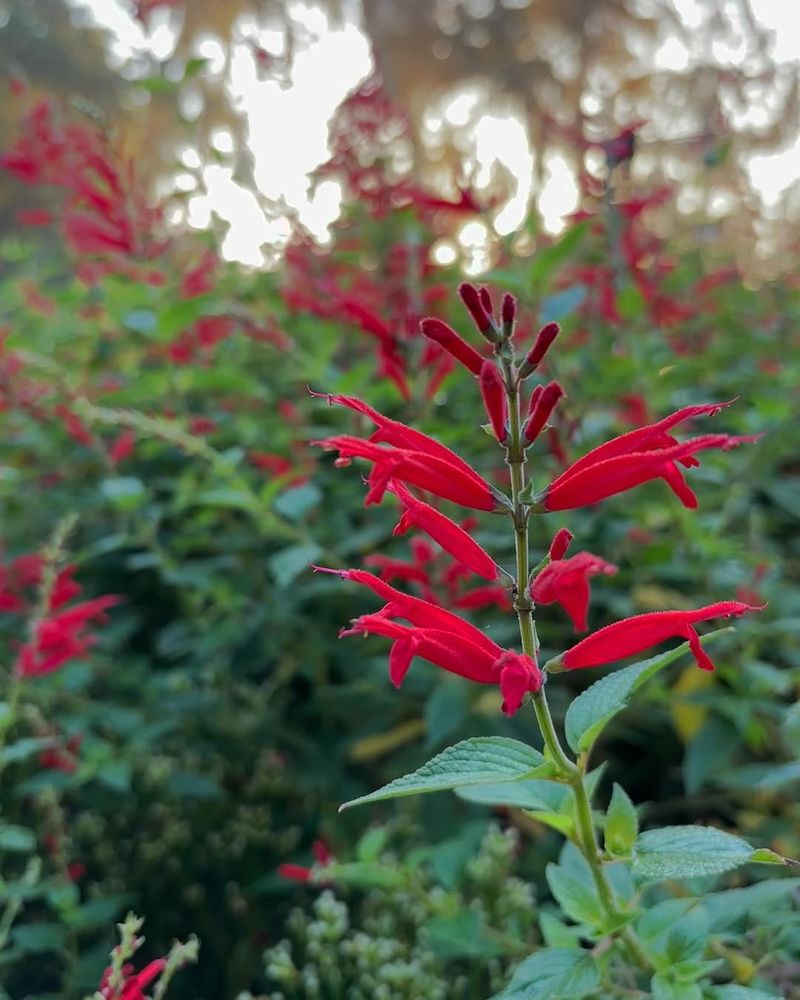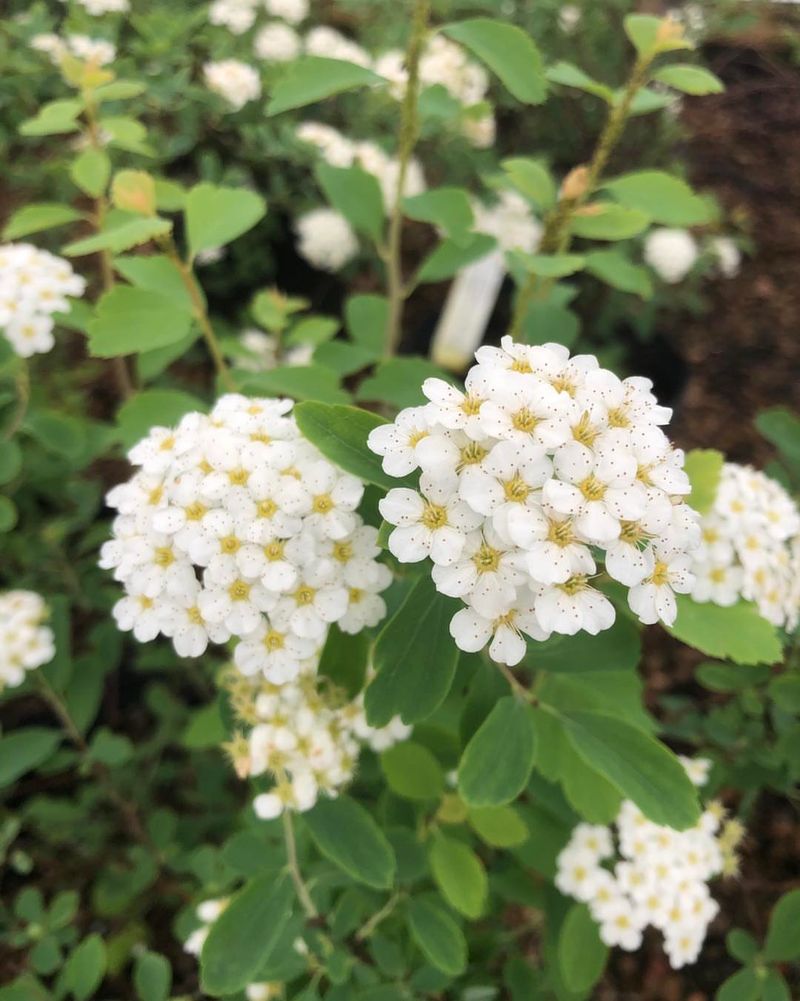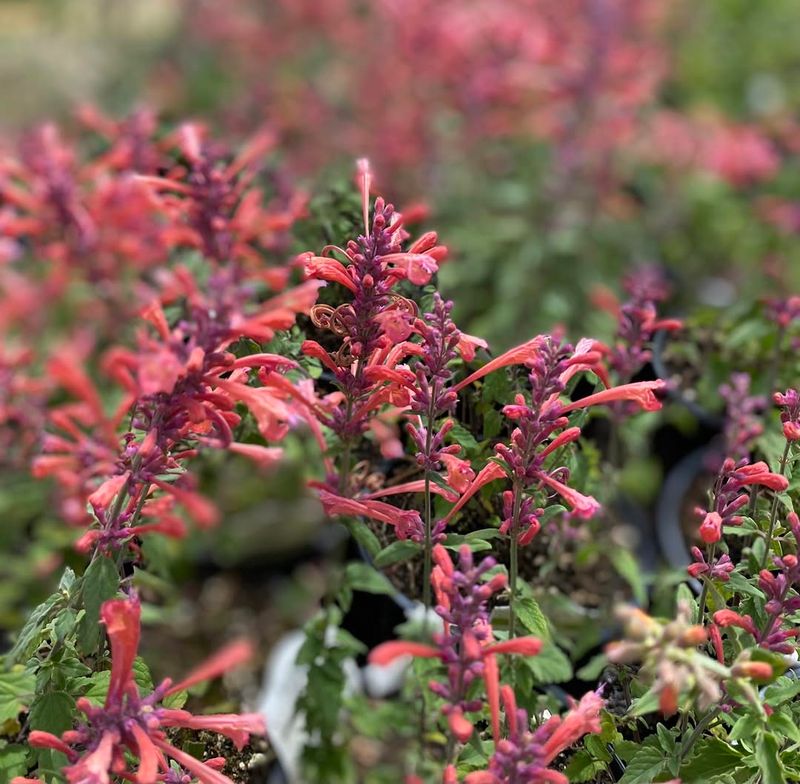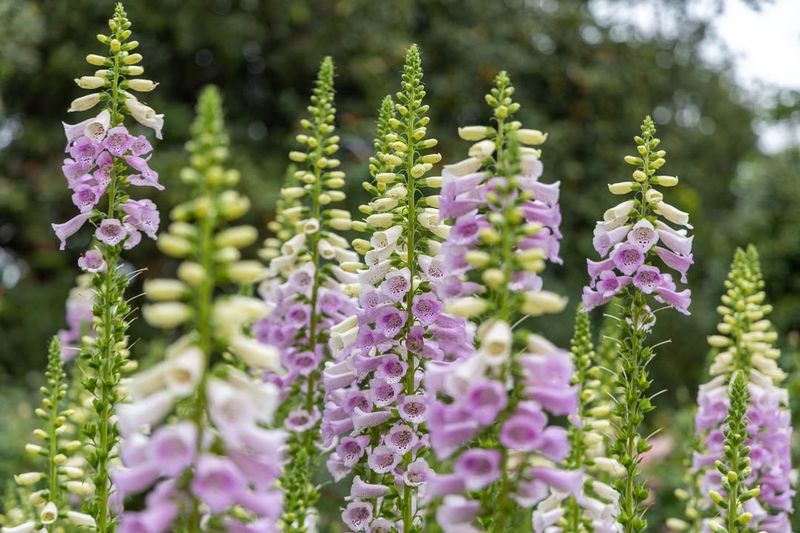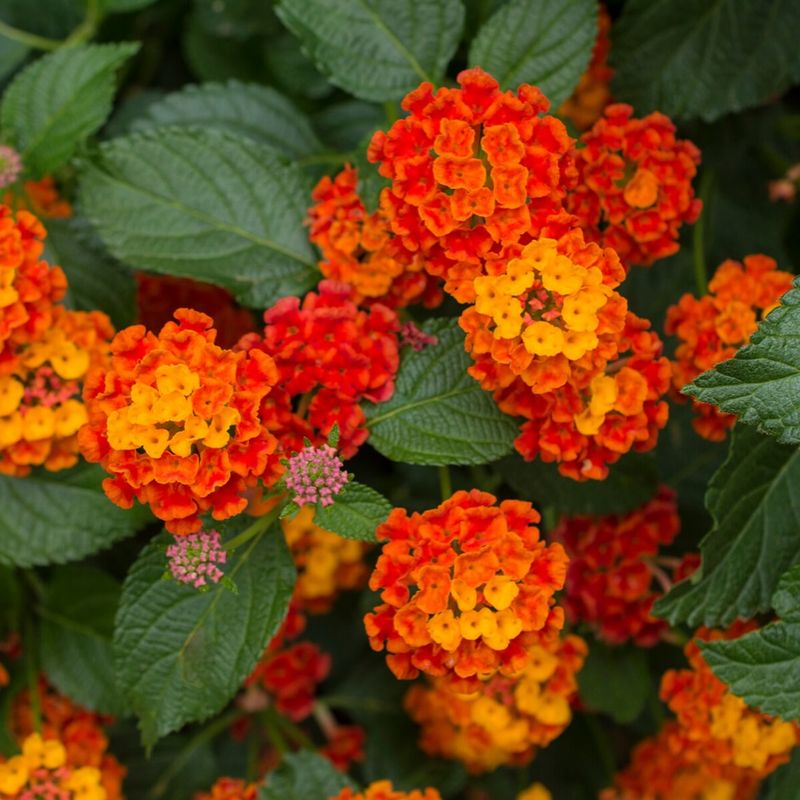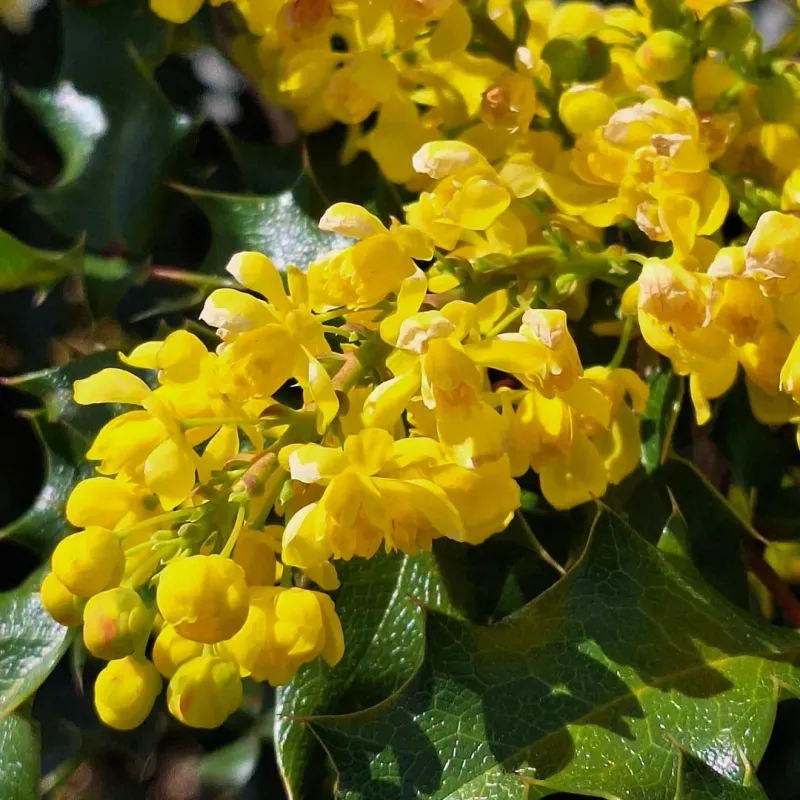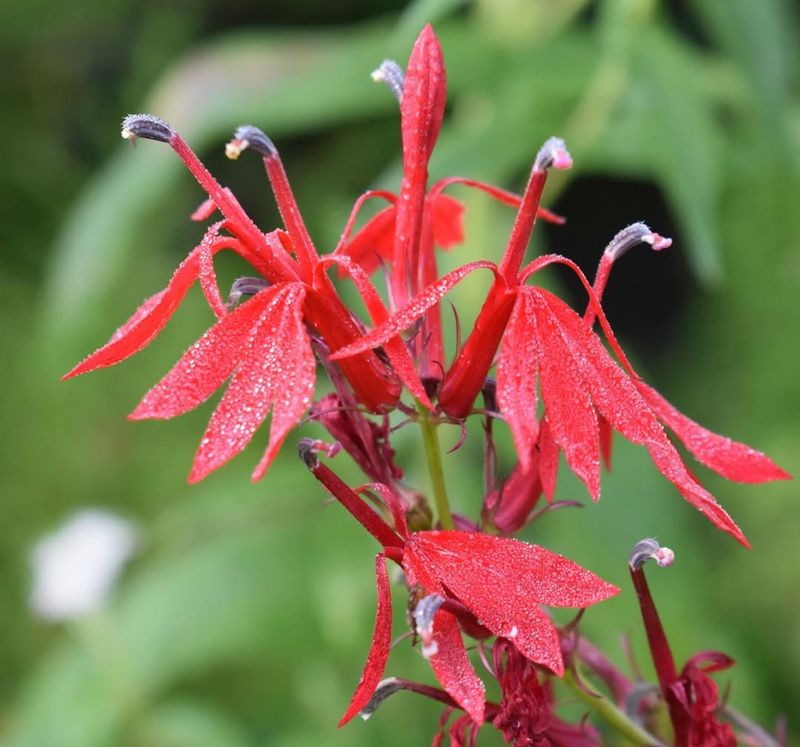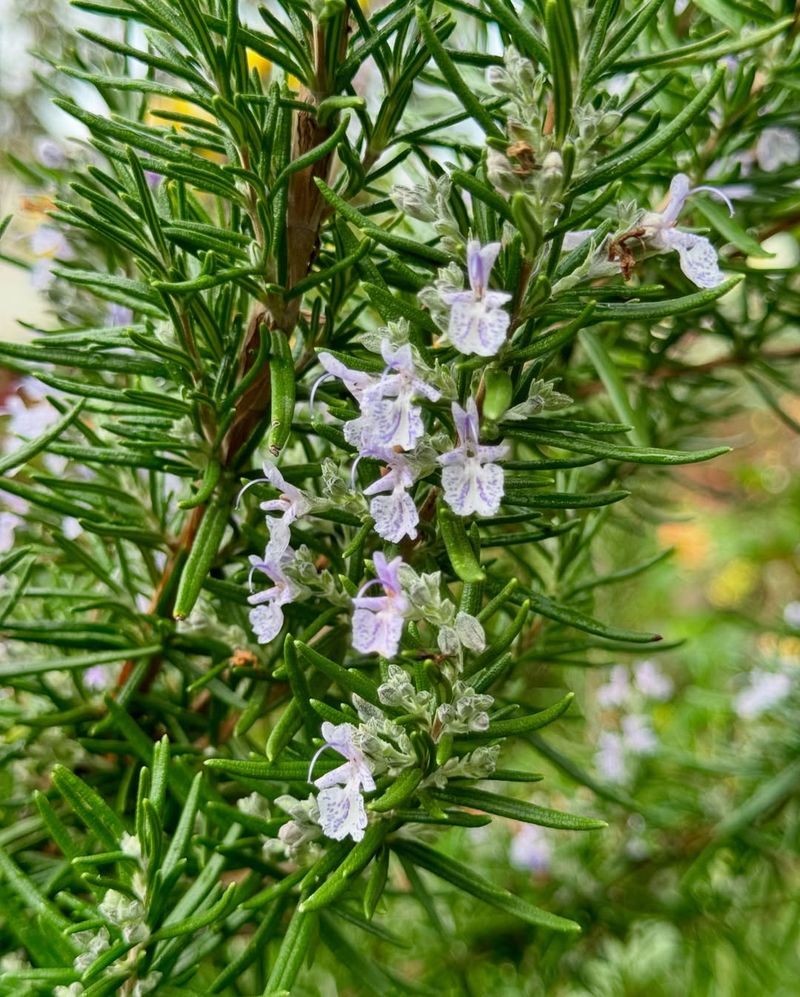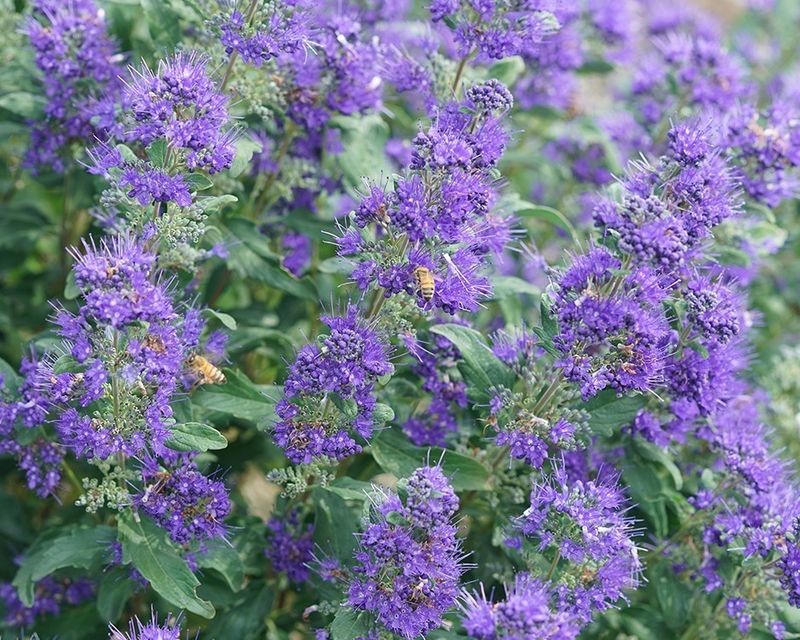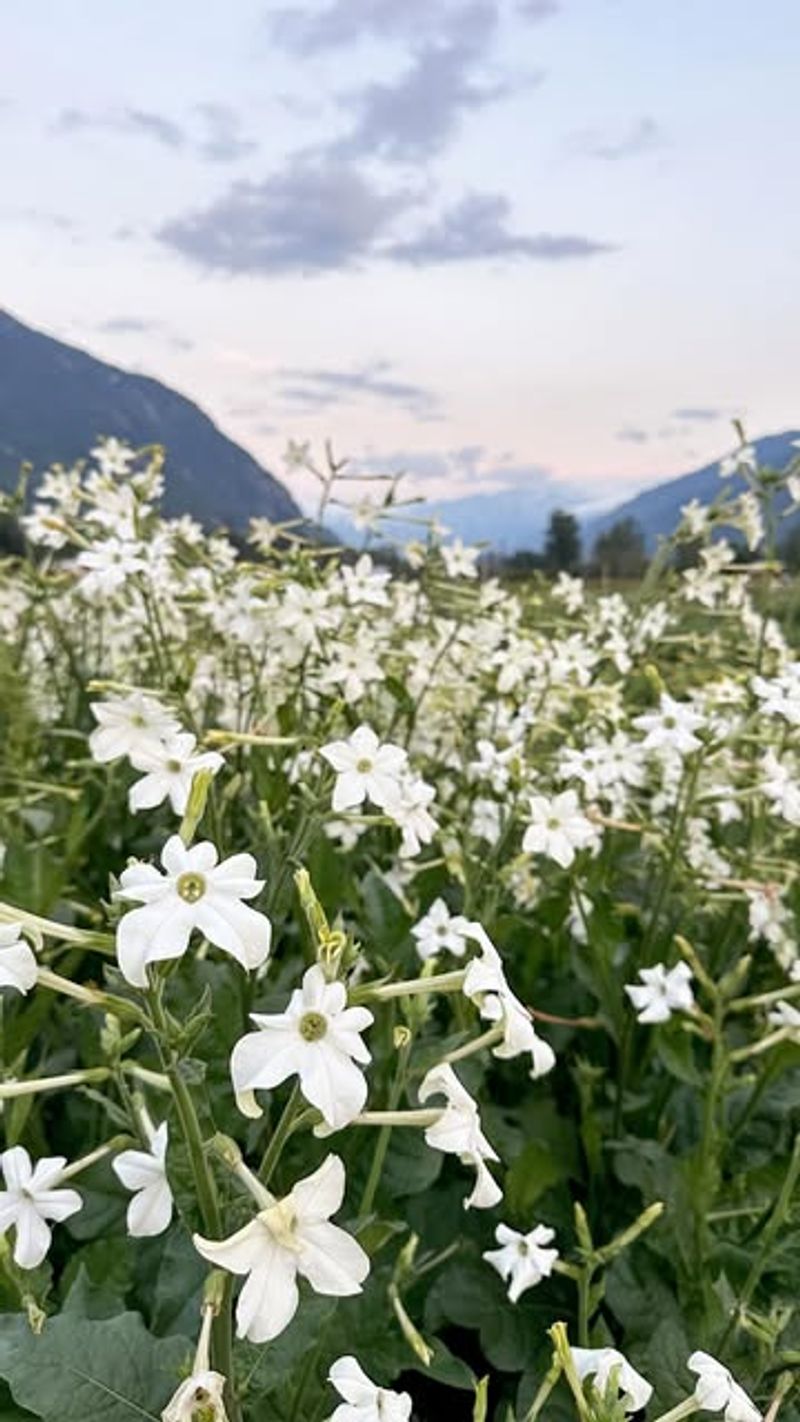If you’re dreaming of a yard full of fluttering hummingbirds—but not a single deer nibble in sight—you’re in the right place.
I’ve picked these shrubs for their gorgeous blooms, sweet nectar, and their not-so-welcoming vibe for hungry deer. It’s the kind of win-win every gardener loves. These beauties pull in the pollinators while quietly keeping the grazers at bay.
Let’s check out the flowering shrubs that do it all, without the fuss.
1. Butterfly Bush
Long, cone-shaped flower clusters in purple, pink, or white create a buffet for hungry hummingbirds. The sweet honey scent might remind you of summer afternoons, but deer find it completely off-putting.
Plant several varieties for continuous blooms from summer through fall. These fast-growing shrubs reach impressive heights, sometimes up to 10 feet tall, creating dramatic backdrops in sunny garden spots.
2. California Lilac
Vibrant blue-purple clusters cover this drought-tolerant shrub in spring, creating a stunning display that hummingbirds can’t resist. The aromatic foliage contains compounds that naturally repel deer and other browsing animals.
Native to western North America, these hardy plants thrive in poor soil conditions where other shrubs struggle. Their fragrant blooms also attract butterflies, making your garden a wildlife haven.
3. Red Hot Poker
Fiery orange and yellow torch-like blooms stand tall above grassy foliage, beckoning hummingbirds from across the garden. The striking flowers contain sweet nectar perfectly suited for their long bills.
Deer avoid these plants due to their tough, spiky leaves. Native to South Africa, these drought-resistant perennials bring a tropical feel to any landscape while requiring minimal maintenance once established.
4. Weigela
Bell-shaped pink, red, or white flowers emerge in late spring, providing an early-season feast for returning hummingbirds. The tubular blooms fit perfectly with hummingbirds’ specialized feeding habits.
Deer typically avoid weigela due to its slightly fuzzy leaves and strong scent. Many newer varieties feature colorful foliage in burgundy or variegated patterns, adding visual interest even when not in bloom.
5. Flowering Currant
Cascades of delicate pink flowers dangle like tiny chandeliers in early spring, providing crucial nectar for hummingbirds just returning from migration. The strongly scented foliage acts as a natural deer deterrent throughout the growing season.
Native to western North America, these adaptable shrubs thrive in partial shade and attract beneficial pollinators. Fall brings colorful foliage and dark berries that feed native birds.
6. Salvia
Spikes of vibrant blue, purple, or red flowers bloom profusely from spring through fall, creating a hummingbird paradise. The aromatic leaves contain oils that deer find distasteful, keeping your plants safe from browsing.
Drought-tolerant and heat-loving, salvias thrive in sunny spots with minimal care. Many varieties rebloom throughout the season if deadheaded, providing months of color and hummingbird activity.
7. Bee Balm
Shaggy, crown-like flowers in red, pink, or purple sit atop tall stems, serving as natural hummingbird feeders. The intensely fragrant foliage contains strong-smelling oils that effectively repel deer and other garden pests.
Native to North America, these pollinator magnets spread slowly to form colorful colonies. Beyond attracting wildlife, the edible flowers and aromatic leaves can be used in teas and cooking.
8. Bottlebrush
Cylindrical, brush-like blooms in vivid red or pink resemble their namesake cleaning tool while serving up nectar for hummingbirds. The leathery leaves contain aromatic compounds that naturally deter deer browsing.
Originally from Australia, these evergreen shrubs bring tropical flair to warm-climate gardens. Their unusual flowers create dramatic focal points and can be dried for long-lasting arrangements.
9. Abelia
Clusters of small, tubular white or pink flowers appear from summer through fall, attracting hummingbirds with their sweet nectar. The glossy foliage contains compounds that deer find unpalatable, making this a safe bet for problem areas.
Semi-evergreen in many regions, abelias provide year-round structure and interest. Their arching branches create an elegant form, perfect for foundations or informal hedges.
10. Russian Sage
Airy spires of tiny lavender-blue flowers create a cloud-like effect above silvery foliage, drawing hummingbirds throughout summer. The strongly aromatic leaves contain oils that deer absolutely detest, making this a foolproof choice for problem areas.
Extremely drought-tolerant once established, this sun-loving perennial thrives in poor soil. Its tall, wispy form adds height and movement to garden borders while requiring minimal maintenance.
11. Pineapple Sage
Brilliant scarlet flowers emerge in late summer, perfectly timed for migrating hummingbirds fueling up for their journey south. The pineapple-scented foliage makes this herb a garden delight for humans but a turn-off for deer.
Crush a leaf between your fingers to release the fruity fragrance that gives this plant its name. Fast-growing and heat-loving, it makes an excellent container specimen or back-of-border anchor.
12. Spirea
Frothy clusters of tiny white or pink flowers blanket these hardy shrubs in spring or summer, depending on the variety. Hummingbirds appreciate the abundant nectar while deer typically avoid the bitter-tasting foliage.
Easy-care and adaptable, spireas bounce back quickly even after harsh winters. Many varieties feature colorful new growth or fall foliage, extending their ornamental value beyond flowering season.
13. Hummingbird Mint
Tall spikes of tubular flowers in orange, pink, or purple stand like beacons for passing hummingbirds. The strongly scented, silvery foliage contains aromatic oils that effectively keep deer at bay all season long.
Native to the American Southwest, these drought-tolerant perennials thrive in hot, sunny locations. Their anise-scented leaves remain attractive even when not in bloom, adding texture and color to the garden.
14. Foxglove
Dramatic spires of spotted, tubular flowers in pink, purple, white, or yellow create vertical drama that hummingbirds can’t resist. The hairy leaves contain compounds toxic to deer, making them naturally browse-resistant.
These classic cottage garden plants self-seed readily, creating naturalized colonies over time. Though technically biennials, they behave like perennials with their reliable reseeding habit.
15. Lantana
Multi-colored flower clusters change hues as they age, creating a kaleidoscope effect that attracts hummingbirds all summer long. The rough, aromatic foliage contains compounds that deer find highly unpalatable.
Heat-loving and drought-tolerant, lantanas thrive in challenging conditions where other plants struggle. Their spreading habit makes them excellent for spilling over walls or filling large containers with season-long color.
16. Oregon Grape
Bright yellow flower clusters appear in early spring, providing crucial nectar for hummingbirds emerging from winter. The holly-like leaves with sharp spines effectively discourage deer browsing year-round.
Native to western North America, this evergreen shrub offers four-season interest with blue-black berries following the flowers. The mahogany-colored winter foliage adds rich color to the dormant garden.
17. Cardinal Flower
Intense scarlet blooms arranged on tall stalks create a beacon for hummingbirds, which evolved alongside these native plants. The bitter-tasting foliage contains alkaloids that effectively deter deer browsing.
Naturally found along stream banks, these moisture-loving perennials thrive in damp garden spots. Their brilliant red color stands out dramatically against green backgrounds, creating focal points in partially shaded areas.
18. Rosemary
Small, lavender-blue flowers appear along woody stems in spring, offering nectar for early-season hummingbirds. The intensely aromatic, needle-like leaves contain pungent oils that deer find extremely distasteful.
This Mediterranean herb doubles as an ornamental and culinary plant. Upright varieties create informal hedges while prostrate types cascade beautifully over walls or container edges.
19. Bluebeard
Powder-blue flower clusters emerge in late summer when many other shrubs have finished blooming. Hummingbirds particularly value these late-season nectar sources, while deer avoid the aromatic gray-green foliage.
Also known as blue mist shrub, this compact plant fits perfectly in smaller gardens. The silvery foliage creates a lovely backdrop for the vibrant flowers that also attract butterflies and beneficial insects.
20. Flowering Tobacco
Star-shaped, tubular flowers in white, pink, or red release their sweet fragrance in the evening, attracting hummingbirds during their active feeding times. The sticky, hairy leaves contain nicotine compounds that naturally repel deer and other pests.
Though technically perennials, these plants are often grown as annuals in colder climates. Their tall flower stalks create vertical interest and work beautifully in cottage garden settings.

